|
|
|
|
Brig. General Henry H. Sibley led his force of 2,500 men across the Rio Grande River and up the east side of the river to the ford at Valverde, north of Fort Craig, New Mexico, hoping to cut Federal communications between the fort and military headquarters in Santa Fe. Union Col. E.R.S. Canby left Fort Craig with more than 3,000 men to prevent the Confederates from crossing the river. When he was opposite them, across the river, Canby opened fire and sent Union cavalry over, forcing the Rebels back. The Confederates halted their retirement at the Old Rio Grande riverbed, which served as an excellent position. After crossing all his men, Canby decided that a frontal assault would fail and deployed his force to assault and turn the Confederate left flank. Before he could do so, though, the Rebels attacked. Federals rebuffed a cavalry charge, but the main Confederate force made a frontal attack, capturing six artillery pieces and forcing the Union battle line to break and many of the men to flee. Canby ordered a retreat. Confederate reinforcements arrived and Sibley was about to order another attack when Canby asked for a truce, by a white flag, to remove the bodies of the dead and wounded. Left in possession of the battlefield, the Confederates claimed victory but had suffered heavy casualties. Although the Confederates would soon occupy Santa Fe, they would have to leave New Mexico within four months. Result(s): Confederate victory Location: Socorro County Campaign: Sibley's New Mexico Campaign (1862) Date(s): February 20-21, 1862 Principal Commanders: Col. Edward R.S. Canby [US]; Brig. Gen. Henry H. Sibley and Col. Thomas Green [CS] Forces Engaged: Department of New Mexico (combination of regular and volunteer units) [US]; Army of New Mexico [CS] Estimated Casualties: 389 total (US 202; CS 187) |  The Indians and the Civil War - Effects of the American Civil War on the Native American History Native American history has always been a study full of ambiguous points. Nowadays, when the outlived tribes still live on poor circumstances and try to keep step with our running world despairingly, their unique culture deserves more attention than used to. |
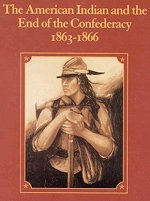 The American Indian and the End of the Confederacy, 1863-1866 The vulnerability of the Indians caught between two warring sides. The failure of the US government to afford to the southern Indians the protection solemnly guaranteed by treaty stipulations was the great cause of their entering into an alliance with The Confederacy |
Kindle Available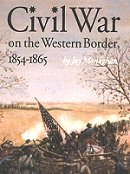 Civil War on the Western Border, 1854-1865 Fanatical politics of the western frontier, immigrant abolitionists with loaded Spencer rifles funded by mysterious personages back East, cut-throats, gin heads and horse thieves, colorful character descriptions |
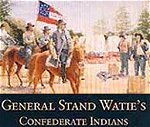 General Stand Watie's Confederate Indians The Confederacy pioneered the idea of giving blacks and women positions of authority [the Matron Law], placed Jews in positions of power, put General's stars on a Mexican and the first American Indian General. This book is his story |
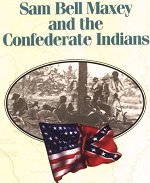 Sam Bell Maxey and the Confederate Indians Accompanying photos, clear maps. This book will leave you wanting to learn more about this rather neglected region of the war. No less important in many regards for the defining of the nation's future than the more well-known battlefields of Virginia, Maryland, and Pennsylvania. Highly recommended |
Kindle Available Civil War on the Western Border, 1854-1865 Fanatical politics of the western frontier, immigrant abolitionists with loaded Spencer rifles funded by mysterious personages back East, cut-throats, gin heads and horse thieves, colorful character descriptions |
 The Civil War in Arizona: The Story of the California Volunteers, 1861-1865 History of the California Column in wartime Arizona and a rare compilation of letters written by the volunteer soldiers who served in the U.S. Army from 1861 to 1866. These letters provide testimony of the grueling desert conditions the soldiers endured as they fought on many fronts |
 Black Flag: Guerrilla Warfare on the Western Border, 1861-1865: A Riveting Account of a Bloody Chapter in Civil War History The guerilla warfare along the Kansas-Missouri boarder brought forth some of the bloodiest incidents of the Civil War |
Kindle Available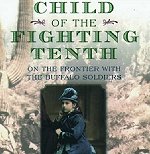 Child of the Fighting Tenth: On the Frontier with the Buffalo Soldiers The drama of growing up in the frontier army, the Indian wars on the plains, the Geronimo campaign in the Southwest and Mexico, her love for the regiment and the Buffalo Soldiers, their admiration for her, and even her lost love for a dashing young cavalry officer |
 The Battle of Glorieta Pass by Thomas S. Edrington, John Taylor A Gettysburg in the West, March 26-28, 1862 |
Following the third day of the Battle of Glorieta Pass, the Texans found themselves surrounded without provisions. Thomas Edrington and John Taylor combine data from records and documents with their firsthand inspections of the battlefield to reconstruct what happened on both sides of the line before, during, and after this controversial Civil War engagement. 35 photos. 14 maps. |